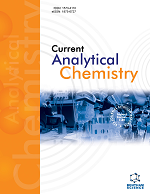
Full text loading...

This is the first report on the development and validation of thin-layer chromatography (TLC) and high-performance thin-layer chromatography (HPTLC)-densitometric methods for the identification of linoleic acid (LA) in petroleum ether extract (PEE) of Euphorbia neriifolia (EN) stem (ST), latex (LX), and bark (BA).
Chromatographic analyses were performed on silica gel-G and silica gel 60 F254 plates and the antioxidant activities of isolated compounds were investigated by 2,2-diphenyl-1-picrylhydrazyl (DPPH) spectrophotometric assay.
The chromatographic analyses revealed better spots and well-separated peaks of LA with retention factor (Rf) values at 0.54 (ST), 0.40 (LX), and 0.64 (BA), respectively. The linearity of the calibration curve ranges from 10-50 ng/spot (ST), 10-100 ng/spot (LX), and 50-200 ng/spot (BA). The proposed method was characterized by better accuracy, better robustness, and good precision, ranging from 0.173 to 0.372% (intra-day) and 0.185 to 0.205% (inter-day). The value of the limit of detection and quantification equal to 1.04 and 3.16 ng/spot in ST, 0.87 and 2.64 ng/spot in LX, and 0.177 and 0.53 ng/spot in BA determined the sensitivity of the method. In the obtained chromatogram, no peak was observed other than the LA which determined the specificity of the method. The % RSD of < 2% after periods of 12, 24, 36, 48, and 72 h determined the stability of standard LA.
Thus, the fingerprinting method is valuable in determining the adulterants and in routine quality control of formulations and herbal drugs.